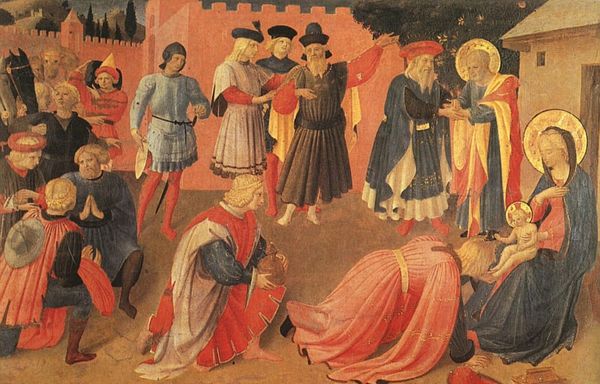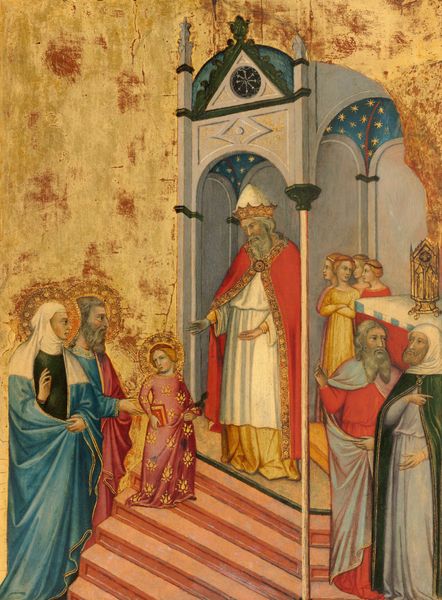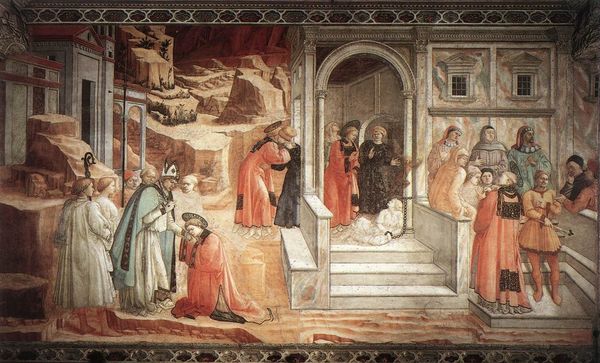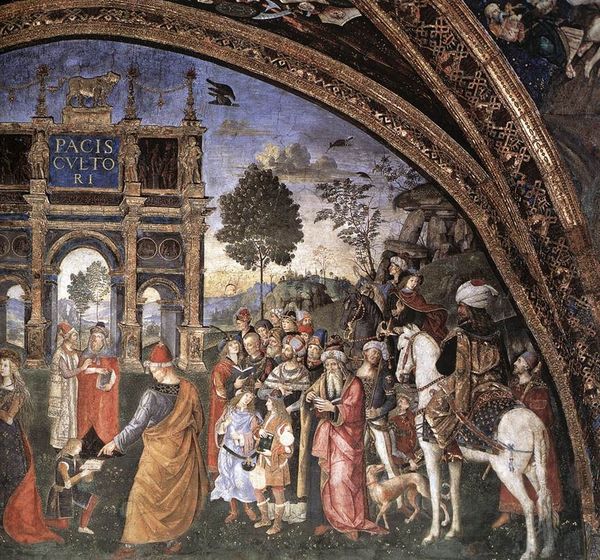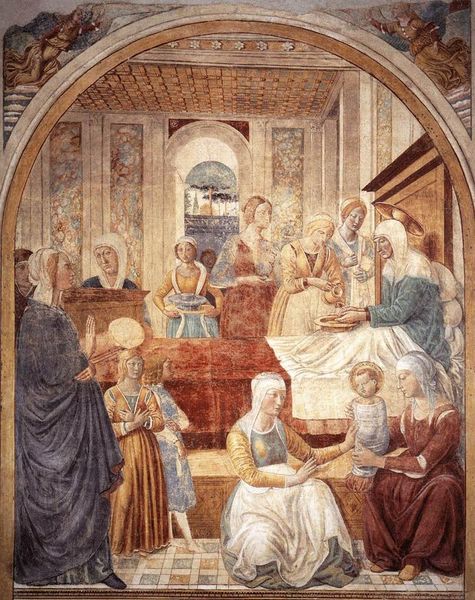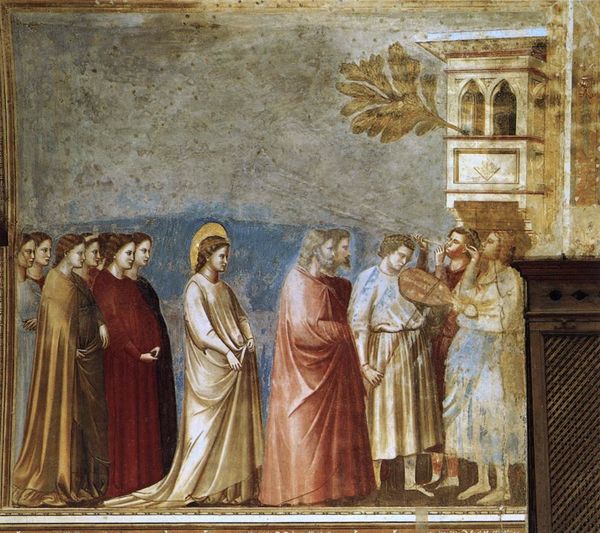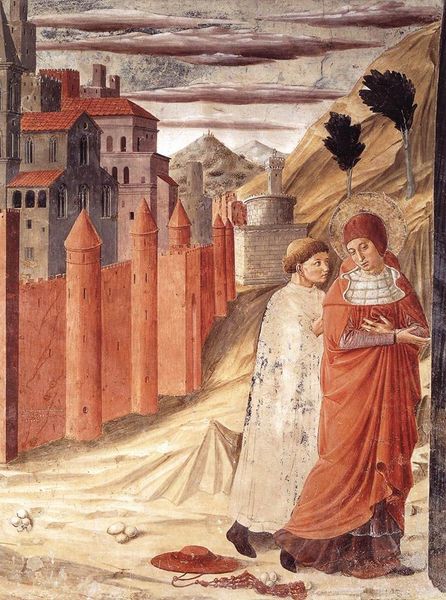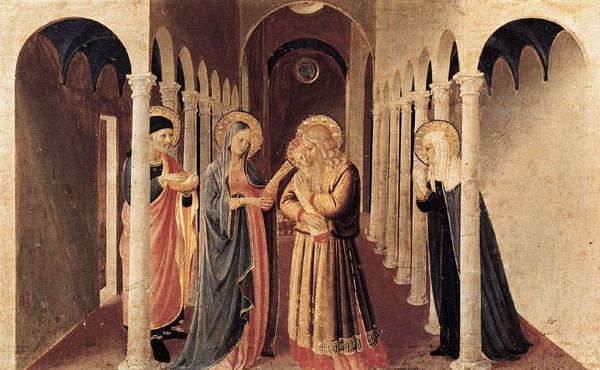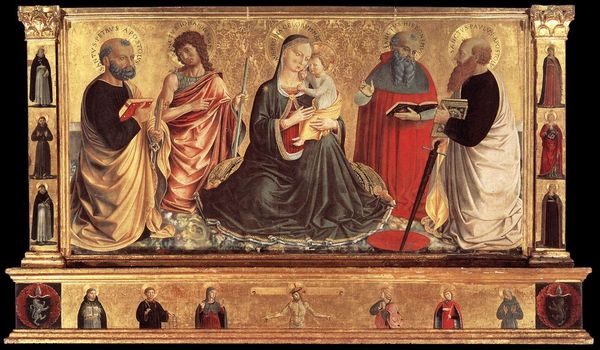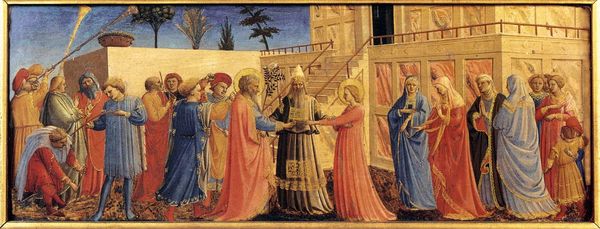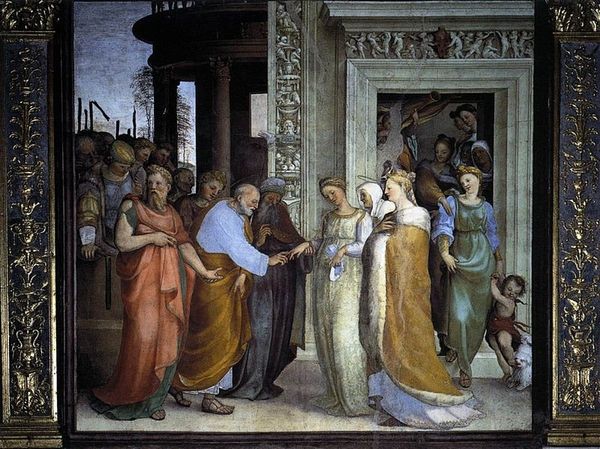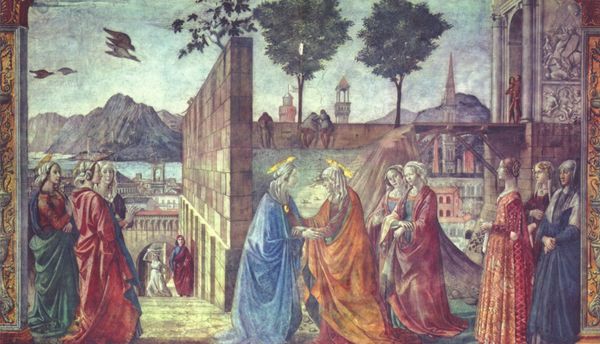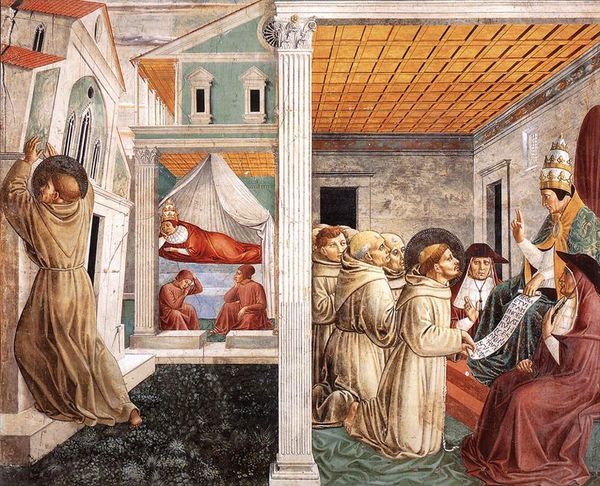
painting, oil-paint, fresco
#
narrative-art
#
painting
#
oil-paint
#
figuration
#
fresco
#
oil painting
#
history-painting
#
italian-renaissance
#
early-renaissance
#
mixed media
Dimensions: 25 x 35 cm
Copyright: Public domain
Curator: This panel, executed in oil paint and fresco, is entitled "St. Dominic Reuscitates Napoleone Orsini," a narrative piece created around 1461 by Benozzo Gozzoli. It’s currently housed in the Palazzo Brera in Milan. Editor: Whoa, what a scene! It’s like a Renaissance soap opera. Dramatic! Everyone's gesticulating, some people are praying, others are, well, laying down… defeated? It feels busy, yet somehow very serene. Curator: Indeed. Gozzoli places the miraculous resurrection centrally, embedding it in layers of social and religious hierarchy that reveal how such events cemented power. It is fascinating how the roles are gendered, note how grief is expressed differently among women versus the postures and garments of the men... Editor: Okay, powerful observation! That division is blatant now that you point it out. There’s a stiffness in some of the men, almost performative solemnity and a frenetic outpouring on the other end that... is this manipulative? And the child? What does the presence of the child mean to all of this? I almost want to re-title this artwork. Something pithy and ironic like 'Theatrics.' Curator: The presence of the child can perhaps represent a divine innocence, someone that understands in very unique terms what's occuring; an allegorical representation that connects a very particular segment of that Early Renaissance Italian society in connection to theological authority and also dynastic structures. This style, so representative of the Italian Renaissance, displays figuration masterfully embedded in a narrative where gestures became, indeed, highly codified performances of grief, wonder, and reverence. Editor: Yeah... those coded gestures! That’s it. While others interpret these paintings through a reverent historical lens, it's hard to unsee how the performative element almost mocks their own social structures... It seems subversive, but is it intended? Curator: That ambiguity might be where its strength lies, I think. The tension between genuine faith and social expectation; after all, even back then, not everyone felt faith equally. The Renaissance inherited some structures, but started to imagine itself in an updated reality that we must analyze from today’s socio-historical intersectionality. Editor: So true! It’s not about rewriting history but re-seeing it. The artist gives us a stage, populated by beautifully painted people in highly suspect dramatic scenarios. It's a gift really – material for us to dig into now. Curator: I completely agree. By studying pieces such as this, we are more equipped to contextualize how structures were inherited, perpetuated, or rejected through their artistic rendering. Editor: Right? Okay, I need to go start drafting some new titles for my hypothetical art show!
Comments
No comments
Be the first to comment and join the conversation on the ultimate creative platform.
